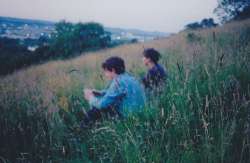Greenery may calm down aggressive teenagers, says study
New York: Excess of aggression in teenagers can be piped down if the neighbourhood in which they are residing has enough greenery, finds a new study. As per the research, increasing greenery levels like parks,

New York: Excess of aggression in teenagers can be piped down if the neighbourhood in which they are residing has enough greenery, finds a new study.
As per the research, increasing greenery levels like parks, golf courses or fields might lead to a 12 per cent decrease in clinical cases of aggressive behaviour.
"Our study provides new evidence that increasing neighbourhood greenery may be an effective alternative intervention strategy for an environmental public health approach that has not been considered yet," said Diana Younan, doctoral student, at the University of California in the US.
Nine to 18-year-olds who were surrounded with more greenery were found to be significantly less aggressive than those living in neighbourhoods with less greenery.
Both short-term (one to six months) and long-term (one to three years) exposure to greenery within 1,000 metres of residences were linked with decrease in aggression.
The behavioural benefit of green spaces equated to approximately two to two-and-a-half years of adolescent maturation.
In addition, this finding stands true for both boys and girls of all ages and races/ethnicities, across populations with different socio-economic backgrounds and living in communities with different neighbourhood quality.
"It is important that we target aggressive behaviours early. Identifying effective measures to reduce aggressive and violent behaviours in adolescents is a pressing issue facing societies worldwide," Younan added.
Factors such as age, gender, race/ethnicity, socio-economic status, parents' educational background, occupation, income level, or marital status and whether their mother smoked while pregnant or was depressed did not affect the findings.
For the study, the team followed 1,287 adolescents from Southern California who were aged nine to 18 years to see whether greenery surrounding the home could reduce aggressive behaviour.
The results will be published in the forthcoming issue of the Journal of the American Academy of Child and Adolescent Psychiatry (JAACAP).